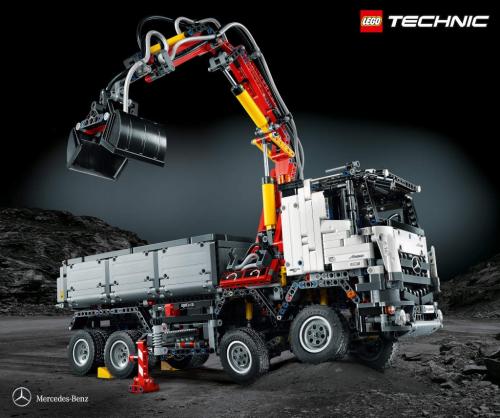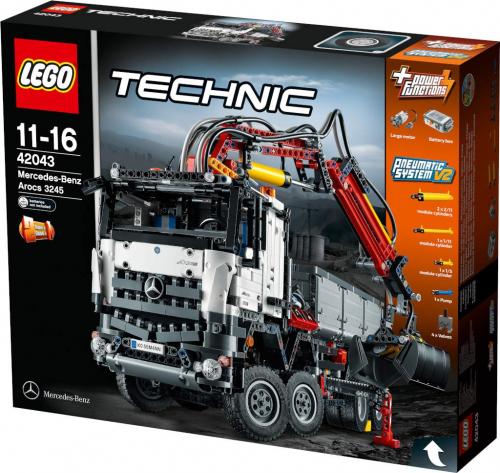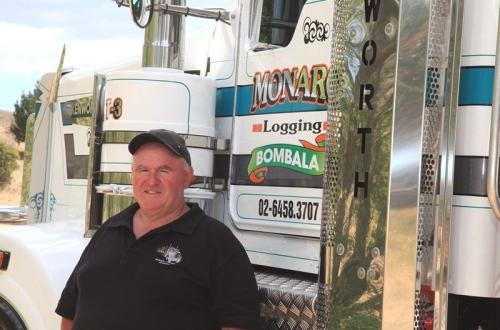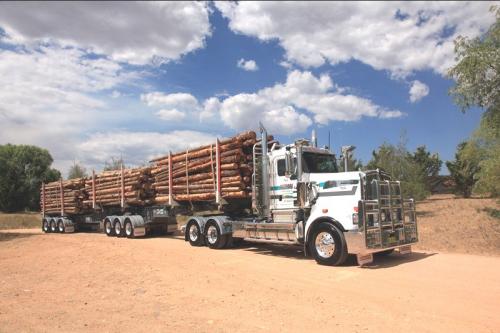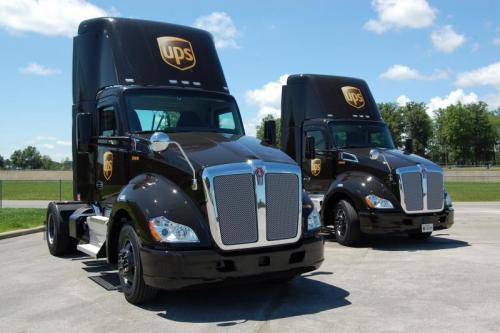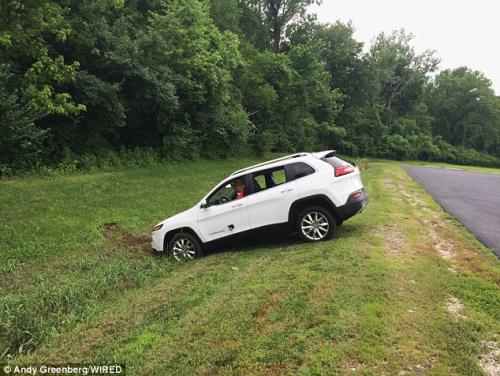
kscarbel2
Moderator-
Posts
18,541 -
Joined
-
Days Won
112
Content Type
Profiles
Forums
Gallery
Events
Blogs
BMT Wiki
Collections
Store
Everything posted by kscarbel2
-
Computer hacker’s demonstrate they can take control of vehicles
kscarbel2 replied to kscarbel2's topic in Trucking News
Fiat Chrysler Recalls 1.4 Million Vehicles to Defend Against Hacks Bloomberg / July 24, 2015 Fiat Chrysler Automobiles NV is recalling about 1.4 million cars and trucks equipped with radios that are vulnerable to hacking, the first formal safety campaign in response to a cybersecurity threat. The move marks a milestone for the industry, which last year set a record with 64 million autos called back for fixes in the U.S. The National Highway Traffic Safety Administration, under fire from Congress for not catching defects more quickly, has been considering punitive action against Fiat Chrysler for failing to protect vehicle owners. Unauthorized remote access to certain vehicle systems was blocked with a network-level improvement on Thursday, the company said in a statement. In addition, affected customers will receive a USB device to upgrade vehicles’ software with internal safety features. Fiat Chrysler was already distributing software to insulate some connected vehicles from illegal remote manipulation after Wired magazine published a story about software programmers who were able to take over a Jeep Cherokee being driven on a Missouri highway. The company led by Chief Executive Officer Sergio Marchionne reiterated that it’s not aware of any real-world unauthorized remote hack into any of its vehicles and stressed that no defect was found and that it’s conducting the campaign out of “an abundance of caution.” NHTSA said it encouraged the action to protect consumers against a vulnerability that could affect a driver’s control. “Launching a recall is the right step to protect Fiat Chrysler’s customers, and it sets an important precedent for how NHTSA and the industry will respond to cybersecurity vulnerabilities,” NHTSA Administrator Mark Rosekind said in a statement Friday. Expanded Action The recall covers about a million more cars and trucks than those initially identified as needing a software patch. The action includes 2015 versions of Ram pickups, Jeep Cherokee and Grand Cherokee SUVs, Dodge Challenger sports coupes and Viper supercars. “That’s not a small number to go after,” Mark Boyadjis, an analyst with IHS Automotive, said in a telephone interview. “This is a pretty quick response and much of it could be P.R. driven. But I think it will keep consumers comfortable and prevent current ones and future ones from straying away from the brand.” Fiat Chrysler shares fell 2.5 percent, the most in two weeks, to $15.15 Friday at the close in New York. The drop pared the stock’s gain for the year to 31 percent. This isn’t the first time automobiles have been shown to be vulnerable to hacking. What elevates this instance is that researchers were able to find and disable vehicles from miles away over the cellular network that connects to the vehicles’ entertainment and navigation systems. That capability makes the possibility of remote hacking of cars a reality. Earlier hacks have mostly been achieved by jacking the researchers’ laptops into diagnostic ports inside the cars. Fiat Chrysler’s UConnect infotainment system uses Sprint Corp.’s wireless network. “This is not a Sprint issue but we have been working with Chrysler to help them further secure their vehicles,” said Stephanie Vinge Walsh, a spokeswoman. NHTSA said it would open an investigation on the remedy “to ensure that the scope of the recall is correct and that the remedy will be effective,” agency spokesman Gordon Trowbridge said in an e-mailed statement. The agency said its electronics and cybersecurity experts will continue to monitor hacking threats and take action when necessary. Consumer Confidence There’s a possibility the recall could affect consumer confidence in Fiat Chrysler, even though the company isn’t the only one with cybersecurity challenges, said Thilo Koslowski, vice president and automotive practice leader at technology consultant Gartner Inc. “It validates that cyber-hacking with cars is a serious issue that the auto industry must pay attention to,” he said. “The auto industry needs to develop new technology to combat these technological problems.” General Motors Co. has a team working on cybersecurity and has hired Harris Corp.’s Exelis and other firms to develop anti-hacking systems, said Mark Reuss, the Detroit automaker’s executive vice president for global product development. GM seeks to block hackers’ access to its autos, he said, and if they do get in, it tries to prevent them from gaining control. “It’s probably one of the most important things we spend time on,” Reuss said. “Anyone who wants to do something like that will probably get on, so you have to look at what happens when they do.” GM has worked with the U.S. military and with Boeing Co. on its anti-hacking systems, he said. Proposed Legislation Senators Edward Markey of Massachusetts and Richard Blumenthal of Connecticut, both Democrats, introduced legislation on July 21 that would direct NHTSA and the Federal Trade Commission to establish rules to secure cars and protect consumer privacy. The senators’ bill would also establish a rating system to inform owners about how secure their vehicles are beyond any minimum federal requirements. The lawmakers released a report last year on gaps in car-security systems, concluding only two of 16 automakers had the ability to detect and respond to a hacking attack. Markey questioned why it took nine months after learning about the security gap for Fiat Chrysler to order a recall. “There are no assurances that these vehicles are the only ones that are this unprotected from cyberattack,” he said Friday in an e-mail. “A safe and fully equipped vehicle should be one that is equipped to protect drivers from hackers and thieves.” Representatives Fred Upton and Frank Pallone, leaders on the House Energy and Commerce Committee, sent letters to 17 manufacturers and NHTSA in May to gather information about how the industry is addressing cybersecurity. “As the underlying technologies seemingly evolve by the day, so too must our manufacturers and regulators keep pace to protect drivers from these growing threats,” the Michigan Republican and New Jersey Democrat said in a statement Friday. -
"People should and do trust me" - Hillary Clinton
kscarbel2 replied to kscarbel2's topic in Odds and Ends
New inquiry into Clinton emails fuels political questions Associated Press / July 24, 2015 A new letter by intelligence investigators to the Justice Department says secret government information may have been compromised in Hillary Rodham Clinton's private server, underscoring an inescapable reality for her presidential campaign: Email is forever. Clinton, the former secretary of state and now the leading Democratic presidential candidate, wants to focus on the economic issues she and her team believe will drive the next election. But they remain unable to fully escape the swirling questions surrounding her decision to run her State Department correspondence through an unsecured system set up at her New York home. The inspector general of the U.S. intelligence community recently alerted the Justice Department to the potential compromise of classified information arising from Clinton's server. The inspector general also sent a memo to members of Congress that he had identified "potentially hundreds of classified emails" among the 30,000 that Clinton had provided to the State Department — a concern the office said it raised with FBI counterintelligence officials. Though the referral to the Justice Department does not seek a criminal probe and does not specifically target Clinton, the latest steps by government investigators will further fuel the partisan furor surrounding the 55,000 pages of emails already under review by the State Department. A statement from the intelligence inspector general, I. Charles McCullough, and his counterpart at the State Department, Steve Linick, said that McCullough's office found four emails containing classified information in a limited sample of 40 emails. "This classified information should have never been transmitted via an unclassified personal system," they said. For Clinton, the news amounted to a major distraction on a day when she'd hoped to focus on unveiling a new set of economic policies. Instead, she opened her New York City speech by addressing the controversy, decrying some reports as inaccurate. Some media initially reported that Justice Department had been asked to consider a criminal investigation into whether she mishandled her emails. "We are all accountable to the American people to get the facts right, and I will do my part but I'm also going to stay focused on the issues," she said. It was not immediately clear whether the Justice Department would investigate the potential compromise highlighted by the intelligence inspector general. The Justice Department has not suggested any wrongdoing by Clinton, according to U.S. officials speaking on the condition of anonymity because they were not authorized to discuss the referral publicly. (WHY ???) But the inspector general's office said in its letter to Congressional oversight committees that it was concerned that "these emails exist on at least one private server and thumb drive with classified information and those are not in the government's possession," said Andrea Williams, a spokeswoman for McCullough. None of the emails were marked as classified at the time they were sent or received, but some should have been handled as such and sent on a secure computer network, said the letter sent to congressional oversight committees. Clinton has maintained that she never sent classified information on her personal email account, which she said in March she used as a matter of convenience to limit her number of electronic devices. The State Department has made public some of the emails involving Clinton, and is under court order to make regular further releases of such correspondence. The aim is for the department to unveil all of 55,000 pages of the emails she turned over by Jan. 29, 2016. But a federal judge this month chastised the department for moving too slowly in providing The Associated Press with thousands of emails submitted through the Freedom of Information Act. Republicans are pushing Clinton to turn over her server to a third party for a forensic evaluation. "Her poor judgment has undermined our national security, and it is time for her to finally do the right thing," said House Speaker John Boehner. (And an arrogant individual with such poor judgement, that would throw state dept. policy to the curb, wants to be president………..unbelievable) Clinton spokesman Nick Merrill said she had followed "appropriate practices in dealing with classified materials." But there's little dispute among intelligence officials that Clinton should have been more careful with her information — though her behavior was likely not criminal. (Sure, why would running her State Department correspondence through an unsecured server in her New York home be irresponsible and criminal? Though our government’s impenetrable systems and those of corporate America including defense contractors that are designing our critical next generation weaponry were successfully hacked, I’m certain that Hillary’s home server is impregnable………sarcasm on my part.) Current and former U.S. intelligence officials say they assume that all of the email that transited Clinton's home server is in the possession of Russian or Chinese intelligence services, who would have easily bypassed whatever security measures she took. They, too, spoke on condition of anonymity because they weren't authorized to discuss the Clinton email situation publicly. Whether a security violation or not, the risk for Democrats is that questions about her email harden into an early narrative about Clinton's honesty and management skills. Already, Republicans have spent months depicting Clinton as a creature of Washington who flouts the rules for personal gain. Clinton's people say questions about her correspondence won't sway voters, who they argue are more focused on economic and family issues. But, there are signs that the issue may have already affected views of their candidate. An Associated Press-GfK poll released last week found that voters view her as less decisive and inspiring than when she launched her presidential campaign just three months ago. Just 3 in 10 said the word "honest" describes her very or somewhat well. -
Louisiana theater gunman kills two and injures seven before turning gun on himself Daily Mail / July 23, 2015 A gunman opened fire Thursday evening at a movie theater in Lafayette, Louisiana killing two people and finally himself. The 58-years-old white male was in the audience at the Grand Theatre prior to opening fire. Seven additional victims were shot and taken to three hospitals. Layfayette Police Chief Jim Craft said the killer stood up 20 minutes into the show and shot two people sitting in the row in front of him. As soon as people started fleeing the auditorium, the killer tried to lose himself in the crowd when he saw two police officers. Louisiana governor Bobby Jindal said one teacher managed to clear the cinema of patrons, while shielding her friend from the gunman. He said the teacher 'jumped in front of a bullet to save her friend's life', before pulling the fire alarm to clear the theatre. The two teachers have been named as Jena Meaux and Ali Martin of New Iberia in Louisiana. According to eyewitnesses Ms Meaux threw herself between the gunman and her friend Ms Martin taking a bullet. Despite being wounded, Ms Meaux dragged herself to the fire alarm to evacuate the building. Officers have identified the criminal, who had a 'pretty old' criminal history, but have not released his name. The injuries of these victims range from critical to non-life threatening, and their ages from late teens to 60s. President Obama meanwhile had just given an interview on gun control to the BBC hours earlier expressing how 'frustrated' he was that the country does not have 'common-sense gun safety laws, even in the face of repeated mass killings.' (American society is “regressing”, moving away from the signature morals and values that for decades defined America. This massively negative change is able to occur and gain momentum because our government refuses to acknowledge and confront it. I feel that our government, inherently, bears a significant responsibility in guiding the positive forward development of American society. Our government, by design, is the steward of our great country. We all know that gun safety laws do not keep guns out of the hands of most people intent on committing harm unto others. Such talk avoids the actual problem, dare I say crisis, we now face in America) The shooting has drawn comparisons to the 2012 Aurora shooting in Colorado in which James Holmes walked into a theater and killed 12 and injured 70 after opening fire. He was recently convicted on 24 counts of first-degree murder in that rampage, which occurred shortly after midnight on July 20 - almost three years ago to the day of Thursday's shooting. Holmes is currently in the sentencing phase of his trial. (Why was James Holmes not executed for this horrendous crime within 48 hours? In cases where there is indisputable evidence (over 100 witnesses in the Holmes case) where a human being deliberately took the life of another human being(s), the only rational response is for the murderer to promptly pay the ultimate penalty for his action of abruptly bringing the life(lives) of others to a premature end and causing irreparable damage to their families including spouses and children. Why would U.S. taxpayers foot the bill for over three years of court processing and prisoner confinement when the individual in question is indisputably guilty of murdering 12 Americans in cold blood? Only when the government sends out a firm message that such behavior is unacceptable in the United States of America, and will be immediately responded to in kind, can society get back on a healthy course that allows American citizens to live their lives in peace)
-
"People should and do trust me" - Hillary Clinton
kscarbel2 replied to kscarbel2's topic in Odds and Ends
Criminal Inquiry Is Sought in Clinton Email Account The New York Times / July 23, 2015 Two inspectors general have asked the Justice Department to open a criminal investigation into whether sensitive government information was mishandled in connection with the personal email account Hillary Rodham Clinton used as secretary of state, senior government officials said Thursday. The request follows an assessment in a June 29 memo by the inspectors general for the State Department and the intelligence agencies that Mrs. Clinton’s private account contained “hundreds of potentially classified emails.” The memo was written to Patrick F. Kennedy, the under secretary of state for management. It is not clear if any of the information in the emails was marked as classified by the State Department when Mrs. Clinton sent or received them. But since her use of a private email account for official State Department business was revealed in March, she has repeatedly said that she had no classified information on the account. At issue are thousands of pages of State Department emails from Mrs. Clinton’s private account. Mrs. Clinton has said she used the account because it was more convenient, but it also shielded her correspondence from congressional and Freedom of Information Act requests. She faced sharp criticism after her use of the account became public, and subsequently said she would ask the State Department to release her emails. The department is now reviewing some 55,000 pages of emails. A first batch of 3,000 pages was made public on June 30. In the course of the email review, State Department officials determined that some information in the messages should be retroactively classified. In the 3,000 pages that were released, for example, portions of two dozen emails were redacted because they were upgraded to “classified status.” But none of those were marked as classified at the time Mrs. Clinton handled them. In a second memo to Mr. Kennedy, sent on July 17, the inspectors general said that at least one email made public by the State Department contained classified information.. The memos were provided to The New York Times by a senior government official. The inspectors general also criticized the State Department for its handling of sensitive information, particularly its reliance on retired senior Foreign Service officers to decide if information should be classified, and for not consulting with the intelligence agencies about its determinations. In March, Mrs. Clinton insisted that she was careful in her handling of information on her private account. “I did not email any classified material to anyone on my email,” she said. “There is no classified material. So I’m certainly well aware of the classification requirements and did not send classified material.” In May, the F.B.I. asked the State Department to classify a section of Mrs. Clinton’s emails that related to suspects who may have been arrested in connection with the 2012 attacks in Benghazi, Libya. The information was not classified at the time Mrs. Clinton received it. The revelations about how Mrs. Clinton handled her email have been an embarrassment for the State Department, which has been repeatedly criticized over its handling of documents related to Mrs. Clinton and her advisers. On Monday, a federal judge sharply questioned State Department lawyers at a hearing in Washington about why they had not responded to Freedom of Information Act requests from The Associated Press, some of which were four years old. “I want to find out what’s been going on over there — I should say, what’s not been going on over there,” said Judge Richard J. Leon of United States District Court, according to a transcript obtained by Politico. The judge said that “for reasons known only to itself,” the State Department “has been, to say the least, recalcitrant in responding.” Two days later, lawmakers on the Republican-led House committee investigating the Benghazi attacks said they planned to summon Secretary of State John Kerry’s chief of staff to Capitol Hill to answer questions about why the department has not produced documents that the panel subpoenaed. That hearing is set for next Wednesday. “The State Department has used every excuse to avoid complying with fundamental requests for documents,” said the chairman of the House committee, Representative Trey Gowdy, Republican of South Carolina. Mr. Gowdy said that while the committee has used an array of measures to try to get the State Department to hand over documents, the results have been the same. “Our committee is not in possession of all documents needed to do the work assigned to us,” he said. The State Department has sought to delay the hearing, citing continuing efforts to brief members of Congress on the details of the nuclear accord with Iran. It is not clear why the State Department has struggled with the classification issues and document production. Republicans have said the State department is trying to use those processes to protect Mrs. Clinton. -
Daimler Press Release / July 22, 2015 LEGO, working together with Mercedes-Benz Trucks, is now following up its Unimog with a further Mercedes-Benz model. “When we looked at all the new products that Mercedes-Benz Trucks had launched, going back to 2011 – there was one particular vehicle that stood out as a potential subject for a further collaborative project: the new Arocs 3245 tipper“, according to Michael Dietz, Head of Marketing for Mercedes-Benz Trucks. With a total of 2,793 separate parts, battery-operated “power functions“ that allow electronic control of the LEGO model and various pneumatic components, the construction-site vehicle is one of the most complex models in the LEGO Technic range. In order to ensure that the LEGO developers did justice to the actual Mercedes-Benz Arocs with their model, LEGO Senior Manager Niels Henrik Horsted and his team visited the Mercedes-Benz Trucks manufacturing facility at Wörth, Germany beforehand to see the production line for themselves. “The Arocs is a perfect match for LEGO Technic“, said Horsted. For the developers, authenticity, functionality and the skill needed to build the model were paramount. Meticulous attention was also paid to characteristic details of the Mercedes-Benz Arocs. The model is 31cm (12.2”) high, 14cm (5.5”) wide and 54cm (21.3”) long, and incorporates many of the key features of the real-life Mercedes-Benz Arocs 3245 tipper. The bucket-tooth design of the radiator grille, the handrail, the steps, and many other features all add up to give the Arocs its unmistakable look. The LEGO Technic Mercedes-Benz Arocs 3245 tipper will be available from retailers from 1 August 2015. .
-
Owner/Driver / July 23, 2015 Burnt out from years of driving interstate up the east coast, Robbie Caldwell headed for the forests. Robbie Caldwell has spent more years than he cares to remember driving up and down the east coast. More to the point, most of the 22 years of his married life were spent out on the highway. "I would have been home for bugger all during those years," Robbie says. He drove for Iannelli Transport for 16 of those years, including a stint behind the wheel of a gold Kenworth T604 hauling a fridge van. "The trucks were the full works, and I was up and down the coast like a yo-yo," Robbie recalls. "They had seven fruit shops, including one in Geelong and one in Brisbane. It was full on." Things went slowly downhill for Robbie, and he ended up in hospital. Once out of hospital he decided it was time for a change, so he went for his B-double license. He scored a job with Monaro Logging, which harvests and hauls timber for the Forestry Corporation of New South Wales (FCNSW) in Bombala, as well as harvesting for PF Olsen in Tumut. Robbie has been with Monaro Logging for six years now. His current steed is a new Kenworth T909, one of six in the Monaro Logging fleet. Robbie says when he first started with Monaro Logging, he wasn’t sure if the job would suit him. "But I do like a bit of a challenge," he says. "Anyone can drive around with a single freezer van. It was good, but some of the places you go in the bush are just spectacular. "When you are out near Tumut, you can look out and see forever." .
-
Diesel News Australia / July 23, 2015 This morning sees the opening of the Perth Truck and Trailer Show at the Perth Convention and Exhibition Centre. The show’s 120 exhibitors have filled the exhibition hall, the foyer and a display area outside the venue with trucks, trailers and transport industry equipment. Running from today until Sunday, the show will take up all six pavilions at the Perth Convention Exhibition Centre. It is is presented by the Commercial Vehicle Industry Association, which is a division of the Motor Trade Association of WA. On show is the new improved cabin interior for the Kenworth K 200, the latest iteration of the Isuzu N Series, Scania’s latest Euro 6 compliant trucks, a heavy duty Cat, the Iveco Powerstar 7800 road train prime mover and the all new Western Star 2800 medium duty truck. Western Australia’s isolation, both in terms of distance and different truck regulations, means suppliers are offering variant not found elsewhere in Australia. This is probably most apparent in the trailers on display. Many designs on show are Western Australia specific and this show is an opportunity for those supplying the WA trucking industry to put their equipment on show. Related photographs - http://www.dieselnews.com.au/perth-show-opens/
-
Computer hacker’s demonstrate they can take control of vehicles
kscarbel2 replied to kscarbel2's topic in Trucking News
Per Volvo Group, Mack Trucks has activated its GuardDog Connect integrated telematics solution in more than 25,000 models since the product launched in 2014. Built upon the Mack Asist platform, it ensures timely information sharing, communication and tracking. The highly talented software engineers of today's vehicular wireless communications systems knew the danger. All software has a backdoor (the NSA insists on them). The truckmakers weighed their options: A. Provide no cybersecurity system and hope the public would accept buying security software from a third party supplier as you purchase anti-virus/malware software for your computer at additional costs with no 100 percent guarantee of performance; B. Or offer their wireless communications system with cybersecurity software and create liability, given they can not give 100 percent assurance that the customer will never be hacked. After consulting with the corporate lawyers and accountants, they went with plan A. So one day in the future, your truck's information screen is going to go gray, followed by a message from a hacking group based in Russia or Ukraine politely explaining that your truck's electronic system has been encrypted, locking you out. But after you pay a Bitcoin ransom, they will gladly unlock your system. -
Transport Topics / July 23, 2015 Daimler AG reported a 50% increase in operating income at its global truck division in the second quarter, led by record sales in North America. The Stuttgart, Germany-based manufacturer said earnings before interest and tax at its commercial truck unit jumped to a record 682 million euros (about $747 million) from 455 million euros ($498 million) in the same period last year. Revenue grew 19% to 9.44 billion euros from 7.97 billion a year earlier. “The main drivers of this earnings development were increased unit sales in the NAFTA region and Western Europe, positive exchange-rate and interest-rate effects and the realization of further efficiency improvements,” the manufacturer said in its July 23 report. Daimler Trucks, which sells Freightliner and Western Star models in North America, said second-quarter sales in the region climbed 20% to a record 49,388 units, including a 22% gain to 43,703 units in the United States. Worldwide sales dipped 1% to 125,113 trucks. Daimler said it expects the market for medium- and heavy-duty trucks to vary from region to region during 2015 and pointed to North America and Europe as the most promising markets. “In North America, the main economic indicators suggest that demand for trucks will remain favorable despite a slight cooling off, so the market should expand by between 10% and 15%,” the company said. Daimler captured 35.9% of the total North American Class 8 market during the second quarter, up from 33.8% a year earlier. The company said its Classes 6-7 market share in the region rose to 40.9% from 40.5%.
-
Father arrested after unconscious son, 7, is placed in a coma after he is found starved and covered in bleach burns Daily Mail / July 22, 2015 A father has been arrested after his seven-year-old son was discovered unconscious in his family home, suffering from severe dehydration and starvation. Randall Lints, 26, from East Brookfield, Massachusetts, is now facing a string of child abuse charges after the youngster was taken to hospital and placed in a coma - weighing just 38 pounds. Paramedics arrived at the house last week after Lints called 911 because the child was unresponsive. Police say the child had bleach burns on his hands and knees, because he was made to get on his hands and knees to scrub the floor. They also discovered bruises on his jaw and forehead. Lints say the injuries were caused by him falling out of bed, but doctors said his explanation wasn't possible. Lints was arraigned Wednesday on charges of assault and battery on a child with substantial injury, permitting substantial injury to a child, reckless endangerment of a child and permitting injury to a child. A not guilty plea was entered for him. He is due back in court Friday where a judge will determine whether it is safe for him to be released. The child is still in a coma and is 'unresponsive'. --------------------------------------------------------------------- Update: School officials say they warned authorities about 7-year-old's dramatic weight-loss in the months before boy was 'beaten into a coma by his father' The Massachusetts Department of Children and Families knew 7-year-old Jack Loiselle was being starved by his father, but did nothing, school officials claim. Administrators at Hardwick Elementary School, where Jack is a student, say they made several reports to child protective services last year, when they noticed the boy was withering away to a mere 38 pounds. Some of those reports were made just a few months before Jack was hospitalized, following a beating by his father, 26-year-old Randall Lints. 'The school department had on a number of occasions requested the help of the Department of Children and Families,' says Quabbin Regional School District superintendent Maureen M Marshall. School administrators weren't the only ones concerned about Jack's wellbeing. According to records, a therapist voiced concern about Lints' insistence on limiting his son's food and water intake as recently as May. Seven-year-old Jack Loiselle was rushed to the hospital on July 14 after his father called 911 saying he found the boy unconscious at home. Paramedics found the boy starving, dehydrated and suffering bruises to his head and burns on his feet. While Lints claimed the numerous injuries on the boys' body were caused by a fall from his bed, police investigators didn't buy the story and last month the father was charged with assault and endangerment. According to court documents, Jack was kept on a tight leash at home where he lived with his father, his father's girlfriend, and her three other children. Lints installed an alarm on Jack's bedroom door and rarely let him leave. He also watched the boy's movements inside the room, using a security camera he could access through his cellphone. Lints monitored his son's activities in 15-minute increments and among the many items that investigators seized home the home were several notebooks labeled 'Jack's Daily Report'. State Trooper Douglas P Grout wrote in a report that 'Jack was required to stay in his room much of the time with very few toys to play with' and was not allowed in play video games in the living room with the other children. Lints forced his son to squat against the wall as punishment, and clean the floors with bleach - causing chemical burns. Additionally he was kept from attending school and doing homework and fed a strict no-sugar diet. Police say the father limited the amount of liquids the boy could ingest so as to control his 'accidents' in the bathroom. When he was brought to the hospital earlier this month, the boy weighed just 38 pounds. Alexandrea Chadwick, mother to Lints' two youngest children, ages two and six months, told police that Jack's strict life was to address behavioral issues. She claims that Jack started strangling and hitting one of his siblings and badly injured a kitten who later had to be euthanized. She says Jack would sometimes hurt himself by throwing himself against walls, 'biting his fingers and toes and stabbing himself with a pencil'. However, Jack's biological mother Amber Loiselle has painted a different story in the press, saying she noticed her son withering away as soon as he started living with his father. Loiselle told the Boston Globe that her son stopped acting like himself, and lost interest in the treats and games he once found joy in. Concerned about her son's well being, Loiselle says she filed complaints with the police but they did nothing. Lints was arraigned July 22 on charges of assault and battery on a child with substantial injury, permitting substantial injury to a child, reckless endangerment of a child and permitting injury to a child. He has pleaded not guilty and is due back in court on Wednesday for a bail hearing. .
-
r model vent window rubber
kscarbel2 replied to dogg rescue's topic in Exterior, Cab, Accessories and Detailing
The former Mack Trucks always offered all the parts of your R/U/DM model door vent windows separately, under part numbers beginning with the vendor code 2795 (Machine-Rite Products, which became a subsidiary of Excel Industries). Back in the day, the 84QS55R (right) and 84QS56R (left) vent window assemblies were reasonably priced. But under Volvo, I imagine they have a horrendous price now (and a meaningless Volvo global system part number instead of the former Mack part number that had meaning). -
Ford bets U.S. consumers will snap up $70,000 pickup trucks
kscarbel2 replied to kscarbel2's topic in Trucking News
The varying of sales pricing based on U.S. city-region is one of the biggest scams of all time. And yet, our government says/does nothing to correct this wrongdoing. -
Tim Maikshilo isn’t fooling me - It's the Vegemite
kscarbel2 replied to kscarbel2's topic in Odds and Ends
That's what I enjoy about breakfast in Europe, they have jugs of the liquid yogurt you can pour on your cereal (eg. muesli) like milk. I've never seen it in the states. -
House amendment would exempt glider kits from EPA proposal
kscarbel2 replied to kscarbel2's topic in Trucking News
-
South Carolina mother who murdered her kids in 1994 says she's not a monster Reuters / July 22, 2015 A South Carolina woman serving life in prison for drowning her two young sons in 1994 had planned to kill herself before the public discovered that she had fabricated her story that her boys had been kidnapped. Susan Smith denies that a relationship with a man who did not want children led her to strap 14-month-old Alex and 3-year-old Michael into the backseat of her car and drive it into a lake. On October 25, 1994, Susan Smith drowned her sons Alex and Michael in her car, which she eased off a lake boat access ramp On November 3, 1994, Smith confessed to drowning Alex and Michael. That same day, divers recover the boys' bodies beneath 18 feet of water. "The only reason I lied is because I didn't know how to tell the people who loved Michael and Alex that they would never see them again," says Smith. "I had planned to kill myself first and leave a note behind telling what had happened," she said. "I didn't believe I could face my family when the truth was revealed." .
-
Man kills his 2 step-children and wife in murder-suicide Associated Press / July 22, 2015 A Georgia man has killed his two stepsons, his wife and himself. The two children were shot to death in their beds. Matthew Fields, 32, arrived at his home Wednesday morning and shot his wife, Rebecca Manning, and her 8- and 9-year-old boys, Jared and Jacob Smith. He also critically wounded Manning's father, Jerry Manning, who lived with the family at the home in suburban Atlanta. Before Fields killed himself, he called his mother acknowledging what he had done and said he was going to take his own life. .
-
22-year old TV anchor calls out president’s flawed terrorism policy
kscarbel2 replied to kscarbel2's topic in Odds and Ends
No need to apologize. I respect you thoughts.......we’re all extremely concerned at the direction our country has taken. We went off course some time ago, but owing to our childhood indoctrination, we all naively assumed the government would ensure that we never deviated too far from the right course, and ultimately would get back onto the right course. Now, we’ve all reached an age that we view matters from a different perspective. We’re able to see through the veil of mistruths and illusions, and realize the actual “state of the union”. As proud and dedicated Americans, we find our situation sad indeed. Morals and ethics are far below where they should be. Directly correlating to the low level of morals and ethics, crime is rampant. The status of the “dumbing down of America” is full speed ahead (The government apparently attaches value to that). Our government doesn’t enforce the laws it created......illegal aliens are invited to stay while respectable law-abiding aliens attempting to immigrate legally wait in line. Our apparent “open door” policy has only served to trigger the arrival of thousands more low caliber illegal aliens that put a incalculable burden on the American taxpayer (The UK, France and Sweden are going broke supporting all their illegal aliens). Donald Trump is correct in saying that undocumented immigrants are all criminals, because they committed a federal offense by entering our country illegally. What’s not to understand there? Why are these illegals not rounded up, finger-printed and pushed back over the fence, and forbidden to ever immigrate to the US as their punishment? I personally welcome respectable immigrants, because their forerunners made our country great. However, we don’t need to add willful law-breakers to our population. An EPA staffed with unqualified leadership has costs American individuals and companies billions. There’s no argument about using advanced technology, as it evolves and is proven, to better protect our environment.......this being the only world we currently have to reside on.......but we must forge a path based on rationality. Our interstate system in collapsing.......literally. That the United States of America does not have modern high-speed rail service is both a disservice to all Americans, and a national embarrassment. You speak of change in our government. That is a very interesting point. Has the basis of our government changed since 1776? I would argue.....no. Let me explain. The founding fathers of our country were amongst the small group of wealthy and schooled individuals, the aristocracy, in the thirteen British colonies that felt the uneducated commoners were unqualified to participate in government. This is why the Electoral College was created, to avoid allowing the mass population to vote directly. The Electoral College, overseen by the founding fathers, would ensure behind the veil that a proper choice was made for president and vice-president. The founding fathers enticed the commoners (mass population) of the English colonist to join together in a revolutionary war for independence by promising them the ability to participate in government. However they didn’t really mean it and, at that time, were quite concerned that should they gain independence, the commoners would hold them to their promises. Much to their relief, that never happened. Under the illusion that they had a say in government, the ignorant commoners for the most part fell in line and allowed the founding fathers to run the show. (To gain an accurate picture of our beginning, I encourage you to read "Independence: The Struggle to Set America Free", by John Ferling - http://www.amazon.com/Independence-Struggle-Set-America-Free/dp/1608190080/ref=sr_1_1?s=books&ie=UTF8&qid=1437620048&sr=1-1&keywords=independence) Fast forwarding to today, our basis of governance has not changed much at all, has it? -
Nikkei Asian Review / July 23, 2015 More than 50% of Japanese autoparts would be imported to the U.S. without tariffs immediately if the proposed Trans-Pacific Partnership trade pact takes effect. U.S. and Japanese negotiators appear to have found some common ground in the items considered unlikely to trouble U.S. manufacturers. They also are considering eliminating tariffs on the majority of the remaining types of autoparts within 10 years. Japan exports to the U.S. about 100 types of autoparts including tires and seat belts. The figure grows to about 300 with the inclusion of screws and other items also used for nonautomotive devices. Such exports total about 2 trillion yen ($16 billion) a year, so the current tariff of 2.5% represents around 50 billion yen in levies. But differences remain. The U.S. seeks a longer protection period for transmission, gear box and other items specified by manufacturers, while Japan wants more types of autoparts subject to the swift tariff relief. Negotiators have agreed to give the longest phaseout period for a 2.5% tariff on fully assembled Japanese automobiles. The period likely will exceed 10 years, possibly reaching 20 to 30. The two countries are about to finalize the design of a dispute-settlement system for trade issues attributable to Japan. A ministerial meeting is set for the end of the month in Hawaii, where the two nations aim to settle all lingering concerns including the level of Japan's tariff-free quota for U.S.-grown rice.
-
Fleet Owner / July 22, 2015 After a nearly two-year research process, United Parcel Service (UPS) is making collision mitigation technology a standard feature on every new Class 8 tractor it orders from this point forward – including the 2,600 units ordered and expected to be deployed by the parcel carrier this year. “For us, this technology really validates the intense training received by our drivers,” Emilio Lopez, the company’s health & safety manager for the southeast region, told Fleet Owner here at a demonstration event hosted by UPS and Bendix Commercial Vehicle Systems, which is supplying the Wingman Advanced collision mitigation package the parcel carrier is deploying on its tractors. “If the system goes off, it’s telling the driver something has significantly changed around them and gets them to refocus immediately on the situation,” Lopez said. “You almost can’t put a dollar value on avoiding or reducing the severity of a crash. [This technology] gives us an opportunity to reduce risk not only for our people but the general public as well. So why not go do this?” UPS said the Wingman package it is adding to all of its new Class 8 tractors include: Bendix’s AutoVue lane departure warning system; electronic stability control (ESC) through Bendix’s electronic stability program or “ESP” offering; Blindspotter side detection radar; and a forward-view radar system for collision mitigation and avoidance. The Wingman system UPS is installing also features adaptive cruise control, which will maintain a constant distance between its tractors and vehicles in front of them via brake activation and engine de-powering. Secondary benefits of active cruise include reducing the accordion effect caused by traffic and, from that, enhanced fuel economy, Bendix noted. Each new UPS Class 8 tractor will also feature automated manual transmissions (AMTs), the parcel carrier noted, as eliminating the need to shift gears provides the driver with greater opportunity to implement its defensive driving techniques – techniques taught via a rigorous training program. Two veteran UPS drivers were on hand at the Summit Motorsports Park in Norwalk where Bendix provided them and reporters the chance to ride along in and test drive trucks equipped with the Wingman system – including the latest version, Wingman Fusion, which UPS is currently evaluating. Paul Savill (at left), a 17-year veteran driver with UPS Freight – the parcel carrier’s LTL division – and an America’s Road Team Captain, explained to Fleet Owner that he expects collision mitigation technology to serve as a “second set of eyes” for him while plying his routes in Cincinnati, OH. “I’m not relying on this technology to make my driving decisions; in fact I never plan on ever using it,” he stressed. “But once a vehicle is on the road, if some completely unexpected situation happens, this system can act as another layer of safety for me and the other drivers around me.” Savill also compared the collision mitigation technology to the “reserve parachute” used in airborne operations. “You never expect to use that parachute but it is there if something goes really wrong,” he emphasized. Bill Lazarski, a 39-year UPS veteran who has operated everything from parcel vans to highway tractors during his career at Big Brown, believes the ultimate benefit of the parcel carrier’s adoption of collision mitigation technology is in the reinforcement and sustainment of good driving habits. “Our Chicago hub got 10 of these trucks to test and at first some of the systems, like lane departure warning, seemed annoying,” he told Fleet Owner. “But what it’s really doing is refocusing you on your driving habits.” As an example, Lazarski (at right) noted the lane departure alert went off his right side along one particular turn he encounters two or three times while piloting his proscribed route. “What I found after refocusing is that my normal line-of-sight on that turn is hindered and that, as a result, the path I took around it departed from the lane – and I didn’t know it,” he said. “That’s where I see the value in this system: it assists me to help make me an even better driver. It’s not end-all/be-all technology, but it’s a great help especially when I am operating in busy traffic areas.” UPS added that several government studies are encouraging the broader adoption of collision mitigation technology, pointing in particular to a special report compiled by the National Transportation Safety Board (NTSB) that said “collision warning systems, particularly when paired with active braking, could significantly reduce the frequency and severity of rear-end crashes.” “Safety is of the utmost importance to UPS. We’re investing in technology that provides UPS drivers with opportunities to increase visibility of their surroundings in constantly changing environments,” noted Randy Stashick, president of engineering for UPS, in a statement. “The safety benefits of these technologies make incorporating them into UPS’s fleet the right thing to do for our employees and fellow motorists,” he added. .
-
Computer hacker’s demonstrate they can take control of vehicles
kscarbel2 replied to kscarbel2's topic in Trucking News
Hackers take control of a Jeep Cherokee and crash it into a ditch by gaining access through the entertainment system Daily Mail / July 21, 2015 Hackers took control of a car and crashed it into a ditch by remotely breaking into its systems from 10 miles away whilst sitting on their sofa. In the first such breach of its kind, security experts cut out the engine and applied the brakes on the Jeep Cherokee - sending it into a spin. The US hackers said they used just a laptop and mobile phone to access the Jeep’ s on-board systems via its wireless Internet connection. Over 470,000 cars made by Fiat Chrysler are at risk of being attacked by similar means. The breach was revealed by security researchers Charlie Miller, a former staffer at the NSA, and Chris Valasek. They worked with Andy Greenberg, a writer with tech website Wired.com, who drove the Jeep Cherokee on public roads in St Louis, Missouri. In his disturbing account Greenberg described how the air vents started blasting out cold air and the radio came on full blast. The windscreen wipers turned on with wiper fluid, blurring the glass and a picture of the two hackers appeared on the car’s digital display to signify they had gained access. Greenberg said that the hackers then slowed the car to a halt just as he was getting on the highway, causing a tailback behind him - though it got worse after that. Greenberg wrote: ‘The most disturbing maneuver came when they cut the Jeep’s brakes, leaving me frantically pumping the pedal as the 2-ton SUV slid uncontrollably into a ditch. ‘The researchers say they’re working on perfecting their steering control - for now they can only hijack the wheel when the Jeep is in reverse. ‘Their hack enables surveillance too: They can track a targeted Jeep’s GPS coordinates, measure its speed, and even drop pins on a map to trace its route.’ The hack was possible thanks to Uconnect, the Internet connected computer feature that has been installed in fleets of Fiat Chrysler cars since late 2013. It controls the entertainment system, deals with navigation and allows phone calls. The feature also allows owners to start the car remotely, flash the headlights using an app and unlock doors. But according to Miller and Valasek, the on-board Internet connection is a ‘super nice vulnerability’ for hackers. All they have to do is work out the car’s IP address and know how to break into its systems and they can take control. Independent security expert Graham Cluley said: ‘Note that the researchers believe that, although they’ve only tested it out on Jeeps, the attacks could be tweaked to work on any Chrysler car with a vulnerable Uconnect head unit.’ The incident is the latest hacking episode which shows just how vulnerable we are to modern technology. It comes after the FBI claimed a US hacker took control of a passenger jet he was on in the first known such incident of its kind. Chris Roberts plugged into the plane’s computer systems through the electronics box under his seat - and briefly moved the aircraft sideways. After being contacted by the hackers nine months ago, Fiat Chrysler released an update to its car systems. In a statement to Wired.com Fiat Chrysler said: ‘Under no circumstances does FCA condone or believe it’s appropriate to disclose "how-to information" that would potentially encourage, or help enable hackers to gain unauthorized and unlawful access to vehicle systems. ‘We appreciate the contributions of cybersecurity advocates to augment the industry’s understanding of potential vulnerabilities. However, we caution advocates that in the pursuit of improved public safety they not, in fact, compromise public safety.’ -------------------------------------------------------------------------------------------- Now, would you provide a vehicle for your wife and children that had electric power steering (EPS) and a wireless internet connection? With the days of hydraulic steering are coming to a close, you'll soon have no choice but EPS. The automakers don't want to add additional cost to vehicles by adding anti-hacking protection, which like your computer's anti-virus software requires daily updating and is never 100 percent effective. The ramifications of a large scale vehicle hack are staggering. . -
Computer hacker’s demonstrate they can take control of vehicles
kscarbel2 replied to kscarbel2's topic in Trucking News
On Wednesday January 8, 2014, Ford global marketing chief Jim Farley said: "We know everyone who breaks the law, we know when you're doing it. We have GPS in your car, so we know what you're doing.” Farley was speaking at a panel discussion about data privacy at the Consumer Electronics Show in Las Vegas where he tried to describe how much data Ford was able to collect on its customers and how its uses the data to avoid privacy issues. . -
CT680 Website - http://www.drivecat.com/trucks/ct680/
-
Under fire for inaction, Obama orders flags lowered for Chattanooga victims The Washington Post / July 21, 2015 President Obama, facing growing criticism from conservatives and some veterans, ordered all American flags on federal grounds to be lowered to half-staff for the remainder of the week to honor the five service members killed at a naval reserve center in Chattanooga, Tenn. The move was announced Tuesday, five days after the shooting rampage and just minutes after Obama delivered a speech here at the Veterans of Foreign Wars convention in which he defended his Iran nuclear deal, called for more military spending, and criticized Republicans for relying too heavily on military force and threats instead of diplomacy. Standing before a crowded hall of aging veterans, Obama eulogized each of the four Marines and the one sailor killed by a gunman in Chattanooga. Tom Sullivan was “everything that a Marine should be,” Obama said. Skip Wells was so devoted to the Marine Corps that he wore his dress blues to his home town’s Fourth of July parade. David Wyatt led with courage in Afghanistan and mentored comrades with post-traumatic stress disorder. Carson Holmquist loved his wife, Jasmine, and their 2-year-old son. Randall Smith, the lone sailor, was a high school baseball star with two young daughters he called “little princesses.” But even as he spoke, the president faced stinging criticism that he hadn’t acted swiftly enough to honor the dead by lowering the flag at the White House and federal buildings around the country. “Oh one more thing, lower the FLAG!!!!!!!! Sir,” former Navy SEAL Marcus Luttrell, author of the best-selling book “Lone Survivor,” wrote on his Facebook page. That critique was then echoed on Capitol Hill, where House Speaker John A. Boehner (R-Ohio) and Senate Majority Leader Mitch McConnell (R-Ky.) moved quickly to lower the flag to half-staff on the Capitol grounds. The midsummer tempest highlighted how Obama — six years into his tenure as commander in chief — continues to be pressed to defend his patriotism, his support for the military and his toughness. Those questions have grown especially pointed in the wake of the agreement with Iran to limit its nuclear program. Republican critics of the deal have blasted it as too weak and conciliatory, and insisted that tougher sanctions and threats of force would have been more effective in bending Iranian will. In his VFW speech, Obama fired back, saying his more measured and diplomatic approach had produced results. “Instead of chest-beating that rejects even the idea of talking to our adversaries — which sometimes sounds good in sound bites, but accomplishes nothing — we’re seeing that strong and principled diplomacy can give hope of actually resolving a problem peacefully,” Obama said. Obama also sought to demonstrate his toughness. In one of the speech’s most striking moments, he said he would not hesitate to use force against those who threatened the United States, and then he read off a list of al-Qaeda leaders killed on his watch. “Osama bin Laden is gone,” Obama said. “Anwar Awlaki, a leader of the al-Qaeda affiliate in Yemen, gone. Many of al-Qaeda’s deputies and their replacements, gone. Ahmed Abdi Godane, the leader of the al-Qaeda affiliate in Somalia, gone. . . . The list goes on. If you target Americans, you will have no safe haven.” The VFW crowd applauded heartily for that list, but the reception overall was cool, if respectful. Obama also struck a hawkish pose in blasting Republicans for backing automatic cuts — known as sequestration — that would pare back defense spending. He accused the Republicans of “trying to fund our military with gimmicks” that would “shortchange national security programs like counterterrorism” and “increase risk to our troops.” “I’ve got a better idea, which is to end sequestration, increase the defense budget, invest in America’s strengths,” Obama said. “We shouldn’t be playing partisan politics when it comes to national security.” “These mindless cuts have to end,” he said. Obama vowed to veto any “bill that locks in” the automatic cuts. That sets up a clash with Republicans who have pressed for more defense spending — without the matching increases to domestic programs that Democrats are demanding. Republicans believe those domestic spending hikes are too costly. On the issue of lowering the flags, Obama seemed to hear the mounting Republican criticism and respond to it. There are no clear or consistent rules that apply to lowering flags to half-staff. Obama ordered flags lowered after the mass shooting at Fort Hood in 2009 but didn’t lower them when a gunman struck last year at the Army post in Texas. He has lowered flags almost immediately after mass shootings in Tucson; Aurora, Colo.; Newtown, Conn.; Oak Creek, Wis.; and the Washington Navy Yard. He has ordered flags to half-staff after the deaths of American icons such as Neil Armstrong, Edward Kennedy, Dorothy Height and Frank Buckles, America’s last surviving World War I veteran. But he didn’t lower the flag after last month’s shooting in Charleston, S.C. Obama focused most of Tuesday’s VFW speech on defending his foreign policy record and detailing improvements made to the Department of Veterans Affairs after last year’s scandal in which VA officials were found to have falsified records to cover up the long waits that many veterans faced to get basic medical care. VA is now handling millions more appointments, and waiting times for veterans have fallen, Obama said. But he also acknowledged that VA continues to struggle with a surge of aging veterans as well as younger veterans of the long wars in Iraq and Afghanistan. “You put it all together, and in some places, wait times are higher than they were last year,” he said. The best way to honor all veterans, Obama said, was through a foreign policy that focused first on diplomacy and turned to war only as a last resort. “I’m hearing echoes of some of the same policies and mind-set that failed us in the past,” Obama said. He said the critics of the Iran deal include “some of the same folks who were so quick to go to war in Iraq . . . [who] said it would only take a few months.” Although Obama did not mention former president George W. Bush, Obama said past administrations were guilty of “rushing into war without thinking through the consequences.” “Who paid the price?” Obama asked. “Our men and women in uniform.” ------------------------------------------------------------------------------------- Per the U.S. Department of Veterans Affairs, the American Flag shall be flown at half-staff when the entire nation is in mourning. These periods of mourning are proclaimed either by the president of the United States, for national remembrance, or the governor of a state or territory, for local remembrance, in the event of a death of a member or former member of the federal, state or territorial government or judiciary. The heads of departments and agencies of the federal government may also order that the flag be flown at half-staff on buildings, grounds and naval vessels under their jurisdiction. On Memorial Day the flag should be flown at half-staff from sunrise until noon only, then raised briskly to the top of the staff until sunset, in honor of the nation’s battle heroes. In the early days of our country, no regulations existed for flying the flag at half-staff and, as a result, there were many conflicting policies. But on March 1, 1954, President Dwight Eisenhower issued a proclamation on the proper times. The flag should fly at half-staff for 30 days at all federal buildings, grounds, and naval vessels throughout the United States and its territories and possessions after the death of the president or a former president. It is to fly 10 days at half-staff after the death of the vice president, the chief justice or a retired chief justice of the United States Supreme Court, or the speaker of the House of Representatives. For an associate justice of the Supreme Court, a member of the Cabinet, a former vice president, the president pro tempore of the Senate, the majority leader of the Senate, the minority leader of the Senate, the majority leader of the House of Representatives, or the minority leader of the House of Representatives the flag is to be displayed at half-staff from the day of death until interment. The flag is to be flown at half-staff at all federal buildings, grounds and naval vessels in the Washington, D.C., area on the day and day after the death of a United States senator, representative, territorial delegate, or the resident commissioner from the Commonwealth of Puerto Rico. It should also be flown at half-staff on all federal facilities in the state, congressional district, territory, or commonwealth of these officials. Upon the death of the governor of a state, territory or possession, the flag should be flown at half-staff on all federal facilities in that governor’s state, territory or possession from the day of death until interment. The president may order the flag to be flown at half-staff to mark the death of other officials, former officials, or foreign dignitaries. In addition to these occasions, the president may order half-staff display of the flag after other tragic events. The flag should be briskly run up to the top of the staff before being lowered slowly to the half-staff position.
-
Arizona mother sentenced to life in prison for killing 5-year-old daughter Reuters / July 17, 2015 An Arizona mother was sentenced on Friday to life in prison without the possibility of parole for abusing and then murdering her five-year-old daughter, whose body was never found despite a massive search. Jerice Hunter stared straight ahead as her fate was read by Judge Rosa Mroz at the Maricopa County Superior Court. Her daughter, Jhessye Shockley, disappeared in October 2011 and is presumed dead. The 41-year-old was convicted in April of child abuse and first-degree murder after a three-week trial in which a county jury heard how she starved and beat the child. An older sister told the trial how the girl could hardly walk at one point, and how their mother kept the girl locked in a closet. A large blood stain was found in the closet which probably came from the girl, jurors heard. After the child was killed, prosecutors said, Hunter stuffed her body in a suitcase and tossed it in a dumpster. Mroz, who took into consideration Hunter's four prior felony convictions for child abuse in California, said she agreed with the jury there was "substantial" evidence that she killed the girl and then "dumped her like yesterday's trash." Hunter herself initially reported the child missing, and a search organized by authorities drew national attention. Hunter said at the time her daughter disappeared after she left the girl with her three older siblings while she ran an errand. The woman was arrested a month later, but was then released without charge as investigators searched a landfill south of Phoenix. Their fruitless efforts there ended after 96 days, having sifted through about 9,500 tons of garbage. Hunter was arrested again in September 2012 and charged with murdering her daughter. .
BigMackTrucks.com
BigMackTrucks.com is a support forum for antique, classic and modern Mack Trucks! The forum is owned and maintained by Watt's Truck Center, Inc. an independent, full service Mack dealer. The forums are not affiliated with Mack Trucks, Inc.
Our Vendors and Advertisers
Thank you for your support!


